From the Spiritualists’ National Union website: This illustrated booklet traces the history of this remarkable phase of physical phenomena, firstly introduced in America around the mid-1870s by Professor W. Denton. Spirit Wax Moulds are one of the most definitive pieces of evidences of physical séance room phenomena and the Britten Memorial Museum is fortunate to hold some of these rare moulds. In the early 1920s Dr. Gustave Geley re-introduced the production of wax moulds with the remarkable Polish medium Franek Kluski. The booklet concludes with a summary of discussions in the Journal of the Society for Psychical Research by modern day psychical researchers. The booklet is available from the SNU online shop
New Books and Media
Wax Spirit Moulds, by Paul J. Gaunt
Publish Date: March, 2012
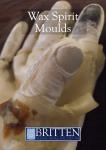
Anomalistic Psychology, edited by Nicola Holt, Christine Simmonds-Moore, David Luke and Christopher French
Publish Date: February, 2012

From the publisher’s website: From the ancient world to the present day, anomalous experiences - such as apparitions, premonitions, out-of-body and near-death experiences - provide stories that continue to mystify and intrigue. In this lively introduction, the authors investigate what these stories signify, and why some people turn to the paranormal for explanation. From defining anomalous experiences to examining the psychological models and methods that have been used to explain them, this text will help open up these strange tales to analysis. Whatever your level of study, this introduction will guide you through the key areas of this fascinating subject.
Contents:
Introduction & Overview
Cognitive Explanations
Personality and Individual Difference Explanations
Explanations for Superstitious Beliefs and Behaviour
Pseudoscience and the scientific status of parapsychology
Methodological issues related to the study of psi
Apparitions
Out-of-body experiences and near-death experiences
Mental Mediumship
Concluding comments
Telephone Calls from the Dead, by Callum E. Cooper
Publish Date: February, 2012

From the publisher’s website: Many people, when asked, will say that at some point in their lives that they have experienced what they believe to be a ghost, or have had a psychic experience. However, will many people openly admit that they have experienced what they believe to be a 'phone call from the dead'? This question has been asked before, and was investigated back in 1979, in a book entitled Phone Calls from the Dead, written by D. Scott Rogo and Raymond Bayless. For many years, this subject has remained dormant, until now, thirty years on, in this new book where the research has been revived and continued. New cases of anomalous telephone communication have been researched, new history has been considered, new findings are presented and alternative theories for how such events take place are discussed.
There are potentially hundreds of people who have experienced these bizarre events of telephone calls from the dead, and much like ghosts, and any other parapsychological phenomena, they appear to be highly common. Once all explanations have been considered, psychological and physical, are we genuinely faced with the reality of contact with the dead and evidence for survival?
Zones of Strangeness: An Examination of Paranormal and UFO Hot Spots, by Peter A. McCue
Publish Date: February, 2012
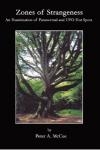
From the publisher’s website: Over the centuries, there've been many reports, worldwide, of unexplained phenomena. Certain areas seem to play host to a disproportionate number of them, either temporarily or on a long-term basis. Some places acquire a reputation for just one type of manifestation, such as UFO activity. Others seem to be the setting for a variety of them - for example, cattle mutilations, sightings of strange animals, and UFO phenomena.
Can the reports be believed? Are the phenomena genuinely paranormal? Do certain areas really see an unusually high number of anomalous events? What's behind the manifestations? Do they involve extraterrestrials, creatures from 'other dimensions', time travellers, the workings of the human mind, or some sort of higher intelligence?
These are just some of the questions that the author addresses in this wide-ranging, well-researched and well-referenced study of the connection, real or supposed, between anomalous phenomena and certain geographical areas. The book cites a mass of case material from the UK, the USA and elsewhere, and also includes useful foundation chapters.
Peter McCue worked for many years as a clinical psychologist in the National Health Service in the UK. He lives in Scotland. His qualifications include a Ph.D., from the University of Glasgow, awarded for a thesis on the nature of hypnosis. His interest in psychical research goes back decades. He believes that paranormal phenomena occur, and that many UFO experiences are genuinely anomalous. He contends that if we want to obtain a comprehensive understanding of ourselves and the nature of reality, these enigmatic phenomena can't be ignored.
Haunted Dundee, by Geoff Holder
Publish Date: January, 2012
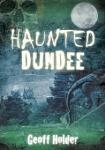
From the publisher’s website: This fascinating book contains a terrifying collection of true-life tales from in and around Dundee.
Featuring stories of unexplained phenomena, apparitions and poltergeists, including the tale of the White Lady of Coffin Mill and Balgay Bridge, the hauntings of the historic ships Discovery and Unicorn, and a host of modern ghost sightings - this book is guaranteed to make your blood run cold.
Drawing on historical and contemporary sources and containing many tales which have never before been published, Haunted Dundee will delight everyone interested in the paranormal.
Geoff Holder is the author of Paranormal Dundee and many other books on the supernatural and the mysterious.
Poltergeist People: A Paranormal Casebook, edited by Robert McLuhan
Publish Date: January, 2012
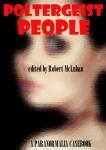
From the publisher: Most people know what is meant by 'poltergeist': knocking noises and movements of objects that seem to have no visible cause. An outbreak can last for days or weeks, and leave bafflement and controversy in its wake. But is it genuine, or should it always be regarded as the effect of self-deception and trickery?
A good place to start is to pay attention to what people say they experienced. This Kindle book is a new collection of original eyewitness accounts, compiled and introduced by Robert McLuhan (author of Randi’s Prize: What sceptics say about the paranormal, why they are wrong and why it matters). They point to the existence of a natural phenomenon, one that is widely thought to occur, but whose implications for science and society are so shocking that it is not publicly acknowledged.
There are a total of 12 narratives given by witnesses and investigators in letters, statements, pamphlets and journal articles. They include the famous 19th century case of the Fox sisters at Hydesville, New York, and a remarkable 1862 case that occurred at Stans, Switzerland (in a new English translation), also well known earlier cases, such as the one described by the Wesley family in England and later cases reported by psychic investigators. A further five, more recent episodes are represented as summaries of the original reports: they include the controversial Columbus, Ohio case of 1984 and the 1966 Miami case, both investigated by the late William Roll.
Contents: Stans, Switzerland, 1862; Stockwell, London, 1772; Hydesville, New York, 1828 (Fox sisters); Epworth, Lincolnshire, 1716-17 (Wesley family); Slawensick, Germany, 1806; Massachusetts, 1867 (Atlantic Monthly); Derrygonnelly, Ireland, 1877; Worksop, Nottinghamshire, 1883; Bell-ringing in London, 1887; Three short cases. Summaries: Sauchie, Scotland, 1960; Andover, Hampshire, 1974; Columbus, Ohio, 1984; Miami, Florida, 1966; Matthew Manning, Cambridge, 1967.
Further details can be found on Robert McLuhan’s website:
http://monkeywah.typepad.com/paranormalia/2012/02/psychic-research-on-kindle.html
The Paranormal, Who believes, Why They Believe and Why it Matters, by Erich Goode
Publish Date: January, 2012
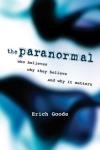
From the publisher’s website: Angels, ESP, psychics, astrology, ghosts, communicating with the dead, UFOs: These and other astounding phenomena are accepted as valid by a substantial proportion of the public. Why do so many members of our scientifically sophisticated society believe in assertions that scientists roundly and almost unanimously reject? And what does expressing such beliefs mean for the lives of those who do?
Unlike many books on the paranormal, which are focused on debunking or verifying such beliefs, in this book sociologist Erich Goode is interested in explaining paranormal belief as a sociological phenomenon: Who believes, why, and what are the consequences? Goode points out a number of interesting sociological features of paranormal belief. First, mainstream educational institutions discourage paranormal speculation, and yet such beliefs remain immensely popular. This tells us a great deal about the limitations of the socialization process that takes place in our educational system.
Another intriguing aspect of paranormal beliefs is that they often show distinct parallels with related thought processes in a variety of other social contexts. For example, the belief that UFOs are extraterrestrial spacecraft fits like a jigsaw puzzle piece into political conspiracy theories. Furthermore, the willingness of the public to resort to paranormal explanations for strange, inexplicable, or anomalous phenomena provides the sociologist with insights into how receptive the public is to mass communication media. Finally, because they are regarded as unconventional in mainstream social circles, paranormal beliefs are very relevant to the sociological study of deviant behavior.
Goode offers these and many more insights in a fascinating analysis that shows how fruitful the paranormal can be for sociological study.
The Science Delusion, by Rupert Sheldrake
Publish Date: January, 2012

From the publisher’s website: The science delusion is the belief that science already understands the nature of reality. The fundamental questions are answered, leaving only the details to be filled in. In this book, Dr Rupert Sheldrake, one of the world`s most innovative scientists, shows that science is being constricted by assumptions that have hardened into dogmas. The sciences would be better off without them: freer, more interesting, and more fun.
According to the dogmas of science, all reality is material or physical. The world is a machine, made up of dead matter. Nature is purposeless. Consciousness is nothing but the physical activity of the brain. Free will is an illusion. God exists only as an idea in human minds, imprisoned within our skulls. But should science be a belief-system, or a method of enquiry? Sheldrake shows that the materialist ideology is moribund; under its sway, increasingly expensive research is reaping diminishing returns.
In the sceptical spirit of true science, Sheldrake turns the ten fundamental dogmas of materialism into exciting questions, and shows how all of them open up startling new possibilities. The Science Delusion will radically change your view of what is possible, and give you new hope for the world.
Consulting Spirit: A Doctor’s Experience with Practical Mediumship, by Ian D. Rubenstein
Publish Date: December, 2011

From the publisher’s website: One morning during a busy clinic my dead grandfather dropped in for a chat... This sent me off on a journey: a mad dash through territory populated by mediums, psychics, poltergeists, and ghosthunters. Along the way I met some fascinating and often strange people.
Let me take you with me as I travel through the hinterland of what we touchingly call reality. I'll introduce you to some of the people and beings I met on my journey. You'll get the inside story, the nuts and bolts of how someone like me can train to become a medium.
Dr. Ian D. Rubenstein is a U.K. doctor who works in Enfield, North London. Since training as a medium, he has attempted to use the mediumistic skills he has learned in his medical work as a primary care physician. For more information about Dr. Rubenstein and his book, visit his website.
Living Consciousness: The Metaphysical Vision of Henri Bergson, by G. William Barnard
Publish Date: December, 2011

From the publisher’s website: Explores the thought of Henri Bergson, highlighting his compelling theories on the nature of consciousness and its relationship to the physical world.
Living Consciousness examines the brilliant, but now largely ignored, insights of French philosopher Henri Bergson (1859–1941). Presenting a detailed and accessible analysis of Bergson’s thought, G. William Barnard highlights how Bergson’s understanding of the nature of consciousness and, in particular, its relationship to the physical world remain strikingly relevant to numerous contemporary fields. These range from quantum physics and process thought to philosophy of mind, depth psychology, transpersonal theory, and religious studies.
Bergson’s notion of consciousness as a ceaselessly dynamic, inherently temporal substance of reality itself provides a vision that can function as a persuasive alternative to mechanistic and reductionistic understandings of consciousness and reality. Throughout the work, Barnard offers “ruminations” or neo-Bergsonian responses to a series of vitally important questions such as: What does it mean to live consciously, authentically, and attuned to our inner depths? Is there a philosophically sophisticated way to claim that the survival of consciousness after physical death is not only possible but likely?
G. William Barnard is Associate Professor of Religious Studies at Southern Methodist University. He is the author of Exploring Unseen Worlds: William James and the Philosophy of Mysticism, also published by SUNY Press, and coeditor (with Jeffrey J. Kripal) of Crossing Boundaries: Essays on the Ethical Status of Mysticism
Spooky Staffs: Paranormal Staffordshire and Haunted Staffordshire, by Anthony Poulton-Smith, Philip Solomon
Publish Date: December, 2011
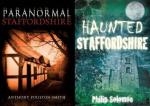
From the publishers’ websites: Paranormal Staffordshire: The first book to explore, in depth, the complete range of paranormal phenomena reported in Staffordshire. Here you will find accounts of well-known hauntings, as well as many previously undiscovered locations. This fascinating account of local ‘sightings’ looks at traditional historical legends as well as modern day experiences, providing fresh knowledge together with the author’s personal accounts of new and traditional stories. Anthony Poulton-Smith’s ghostly tour of the area is illustrated with many of his own photographs and is an ideal book for anyone curious about the unexplained, or even a paranormal tourist. Turn the pages if you dare, and join him on the adventure of your life….or afterlife!
Haunted Staffordshire: From heart-stopping accounts of apparitions, manifestations and related supernatural phenomena to first-hand encounters with ghouls and spirits, this collection of stories contains both new and well-known spooky stories from around Staffordshire. Compiled by the Wolverhampton Express & Star's own psychic agony uncle, Philip Solomon, this terrifying assortment of tales includes details of long-reported poltergeist activity at Sinai House, strange goings-on at the Gladstone Pottery Museum and even a reported visitation from author J.R.R. Tolkien in Leek! Haunted Staffordshire is sure to fascinate everyone with an interest in the area’s haunted history. Philip Solomon is a professional investigator of the paranormal, and has been described by Hans Holzer, a leading authority on the paranormal, as ‘the greatest medium of our time’. Philip is a feature writer, the author of fifteen published books and also has his own radio programme on WCR FM, ‘The Voice of Wolverhampton’. Previous publications for The History Press include Haunted Derby and Haunted Black Country. He lives in Willenhall, West Midlands.
Ghost Hunting for Beginners, by Rich Newman
Publish Date: November, 2011

From the publisher’s website: If you're one of the countless fans of ghost hunting TV shows itching to get off the couch and track some spirits on your own, this book provides everything you need to know to conduct a successful paranormal investigation.
Professional ghost hunter Rich Newman shares proven scientific methods, tried-and-true low-tech approaches, and the latest technology used by the pros. You'll learn what ghosts are, why hauntings occur, the different types of supernatural phenomena, and the importance of conducting responsible investigations. Find out how to form a team, interact with ghosts, gather and examine evidence — and what not to do when seeking spirits. Along with helpful hints, insider tips, and seasoned insights gained from Newman's decade of field work, Ghost Hunting for Beginners is peppered with true accounts of ghost stories from famous cases and the author's own investigations.
Rich Newman (Tennessee) has been investigating the paranormal for over ten years and is the founder of the group Paranormal Inc. He is also a filmmaker whose first feature film, a documentary called Ghosts of War, will be released in 2011. His articles have appeared in Haunted Times and Paranormal Underground.

